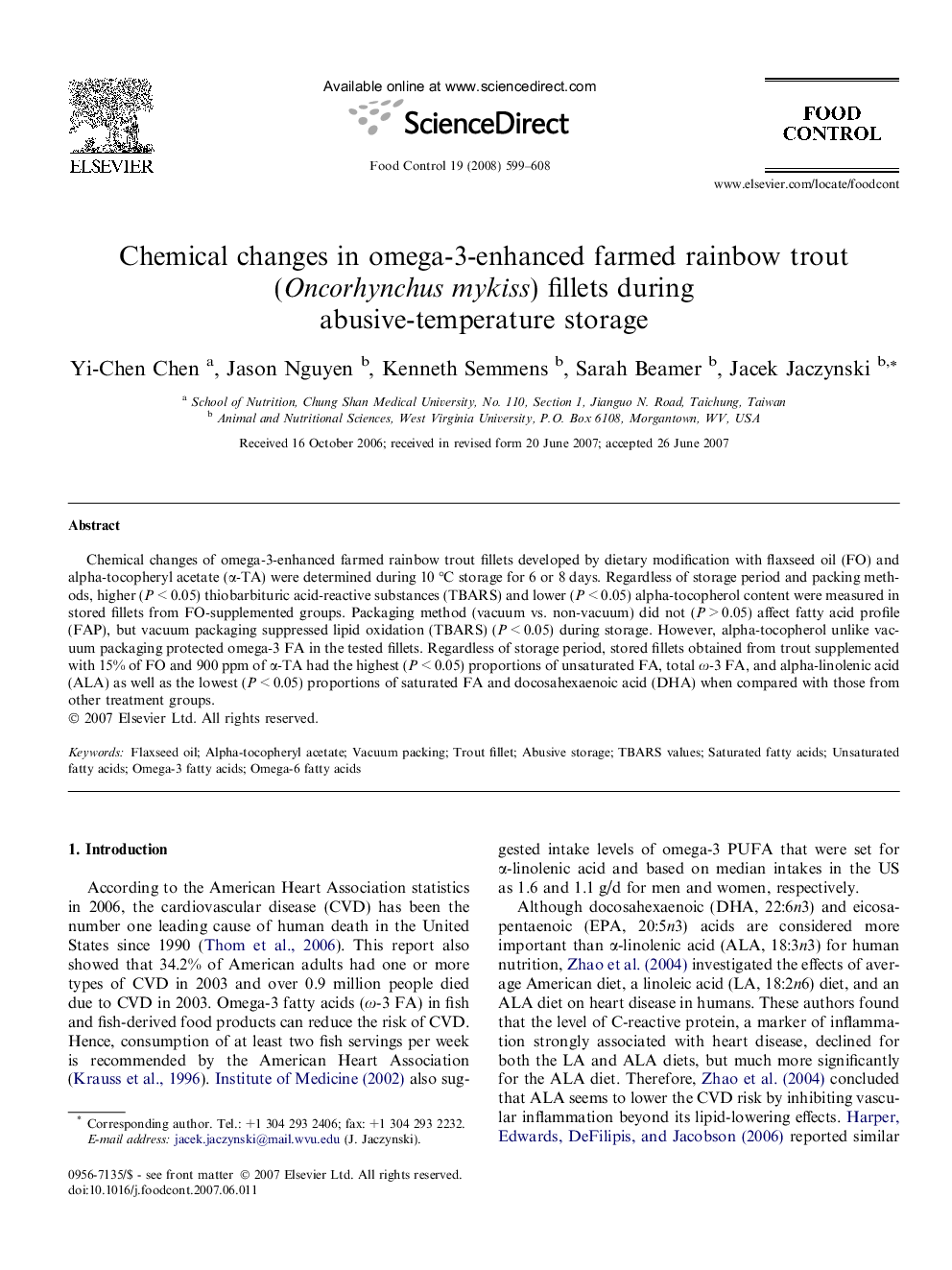| Article ID | Journal | Published Year | Pages | File Type |
|---|---|---|---|---|
| 4560197 | Food Control | 2008 | 10 Pages |
Abstract
Chemical changes of omega-3-enhanced farmed rainbow trout fillets developed by dietary modification with flaxseed oil (FO) and alpha-tocopheryl acetate (α-TA) were determined during 10 °C storage for 6 or 8 days. Regardless of storage period and packing methods, higher (P < 0.05) thiobarbituric acid-reactive substances (TBARS) and lower (P < 0.05) alpha-tocopherol content were measured in stored fillets from FO-supplemented groups. Packaging method (vacuum vs. non-vacuum) did not (P > 0.05) affect fatty acid profile (FAP), but vacuum packaging suppressed lipid oxidation (TBARS) (P < 0.05) during storage. However, alpha-tocopherol unlike vacuum packaging protected omega-3 FA in the tested fillets. Regardless of storage period, stored fillets obtained from trout supplemented with 15% of FO and 900 ppm of α-TA had the highest (P < 0.05) proportions of unsaturated FA, total Ï-3 FA, and alpha-linolenic acid (ALA) as well as the lowest (P < 0.05) proportions of saturated FA and docosahexaenoic acid (DHA) when compared with those from other treatment groups.
Keywords
Related Topics
Life Sciences
Agricultural and Biological Sciences
Food Science
Authors
Yi-Chen Chen, Jason Nguyen, Kenneth Semmens, Sarah Beamer, Jacek Jaczynski,
